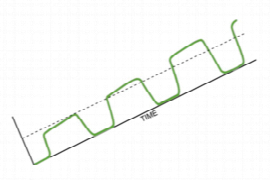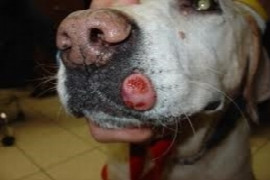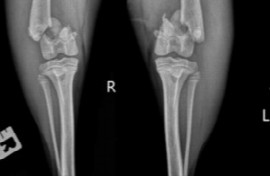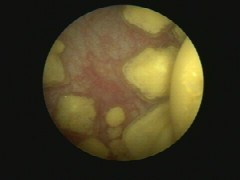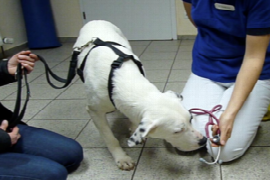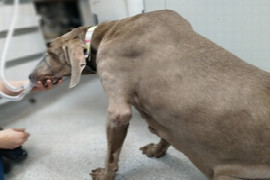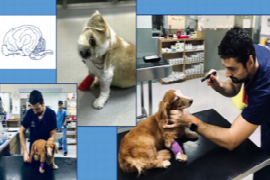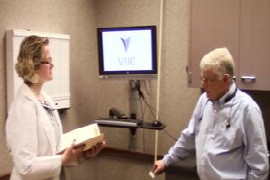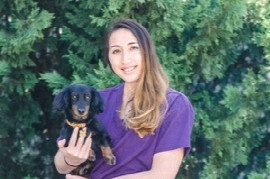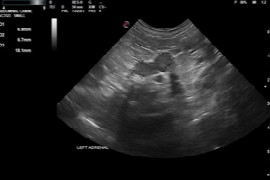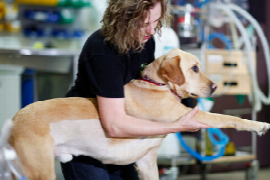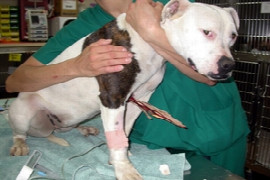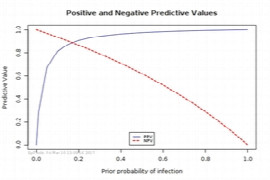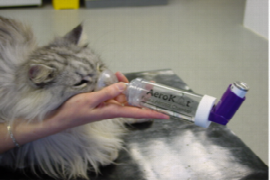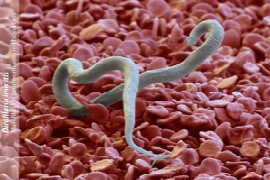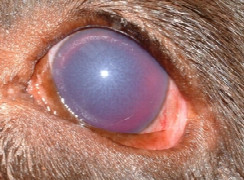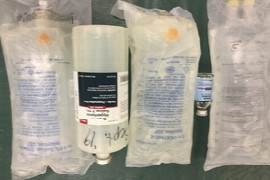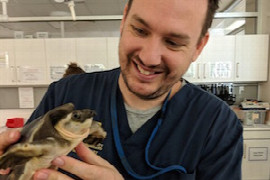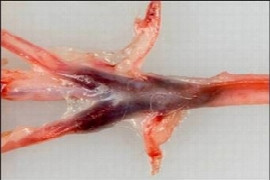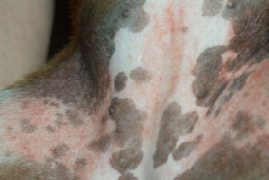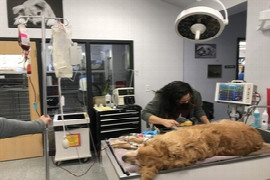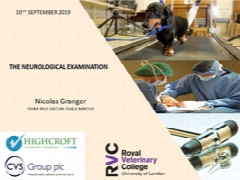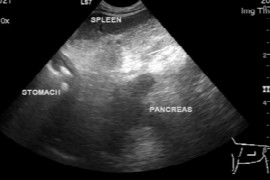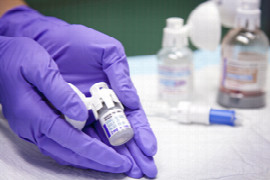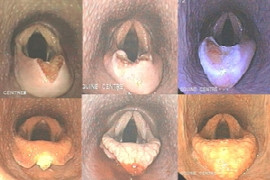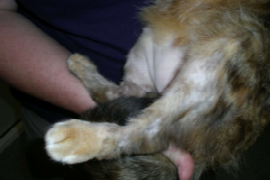Capnography (for Nurses)
General anaesthesia carries an inherent risk for every patient, as unexpected cardiovascular and respiratory side effects can always occur. Therefore, monitoring anaesthesia is extremely important and should mainly focus on anaesthetic depth, cardiovascular and respiratory function.
Capnometry provides real time information on respiratory rate, end-tidal and inspired carbon dioxide values. From these data the anaesthetist can extrapolate information on cardiac output, depth of anaesthesia and breathing systems faults.
This webinar will guide you in the interpretation and understanding of capnography, as this is the most important monitoring tool available in small animal practice, and the person interpreting the information has a central role in the monitoring process.
Duration:
0:49 h
Speaker:
Clara Rigotti
from 1
US$ 49.40
(incl. tax)
(incl. tax)
Management of Status Epilepticus
Seizures are a common neurological disease in general practice. Often, patients can present in an emergency situation such as status epilepticus. This presentation aims to provide a good understanding of the pathophysiology of seizures, the initial emergency management of status epilepticus, a step-wise approach to ongoing treatment as well as the basic diagnostics of a patient with seizures.
Duration:
0:43 h
Speaker:
Hannah Kwong
from 1
US$ 49.40
(incl. tax)
(incl. tax)
Staging the Oncology Patient
Staging is one of the most important components of oncology case management. It involves determining the extent of local disease along with the presence or absence of regional or distant metastasis. The results of staging are used to give more accurate and informed treatment options along with prognostic information for each oncology patient. Some of the biggest challenges in staging is to consider how much staging is required for each case, which are the most appropriate tests, and if the results of these tests will impact treatment options and prognosis. I will discuss this information in a case-based and evidence-based approach, focusing on some of the more common cancers including canine mast cell tumours, lymphoma, oral tumours and apocrine gland anal sac adenocarcinomas.
Duration:
0:57 h
Speaker:
Laura Brockley
from 1
US$ 49.40
(incl. tax)
(incl. tax)
Coping in the COVID-19 Crisis
Covid-19 is testing us at home, and it is testing us at work. Come along to this webinar for support, encouragement and suggestions on how to stay mentally well when the world is going crazy around us.
Duration:
1:09 h
Speaker:
Cathy Warburton
from 1
US$ 49.40
(incl. tax)
(incl. tax)
Exam Room GPS: Using Signposts to Direct the Flow of Conversation
As veterinarians, we often see complicated cases. Patients may present to us with complex histories. Patients may present to us with a multitude of related or unrelated clinical signs. Clients may have more than one concern. We may or may not be able to address every concern at every visit.
All of these situations would potentially benefit from a roadmap. Mapping out the consultation is a communication skill that provides the sense of direction that is otherwise all too often lacking from the examination room. Mapping out the consultation is sometimes referred to as signposting. What mapping out the consultation means is that we verbally provide structure. We acknowledge openly where the conversation is headed, what we are choosing to discuss now, versus that which we will discuss later.
Just like a compass tells you which direction you’re facing, a consultation map tells the client the order in which consultation events will happen.
This webinar will introduce the communication skill of signposting and highlight how its use may be incorporated into clinical practice in a way that builds structure into the veterinary-client relationship.
Duration:
0:42 h
Speaker:
Ryane Englar
from 1
US$ 49.40
(incl. tax)
(incl. tax)
Intervertebral Disc Herniation (for Nurses)
It's 5pm on a Friday evening, kits are wrapped, theatre has been cleaned and everything is calm. Then…the phone rings. A non-ambulatory dachshund is on its way down… Everyone scrambles. Where is the CT tech? Is the sugairtome sterile?
Spinal patients can be some of the most challenging and yet most rewarding patients for Veterinary Nurses. We will answer the what, why and how of IVDD to better prepare you for these cases. From the 5pm Friday admit to the first steps post-surgery or the medically managed patient, this webinar will cover admission to discharge, the disease itself and treatment options both surgical and medical, husbandry and how nurses can ensure the best outcomes for their patients and owners.
Duration:
0:36 h
Speaker:
Paige Taylor
from 1
US$ 49.40
(incl. tax)
(incl. tax)
Using positive psychology to maintain and enhance well-being (for Nurses)
Positive psychology is a relatively new approach to the field of psychology where practising psychologists can help people achieve their maximum potential, without the individual necessarily having any clinical symptomatology. It is an important step in the era of psychology that takes the focus off what is wrong with people (or the disease model), and instead focuses on what is right with people. It is not about positive thinking, and it does not assume all other psychology is 'negative'. It is referred to as a branch of applied psychology that essentially considers people’s character strengths, and builds on those strengths to enhance a healthy and balanced lifestyle. Basically, it looks at what is “right”, as opposed to the traditional clinical approach that focuses on what is “wrong” (with ourselves, our organisations, our environment etc.). It also investigates what makes life worth living and how we can live the good life, and uses five pillars referred to as PERMA.
Duration:
0:52 h
Speaker:
Nadine Hamilton
from 1
US$ 49.40
(incl. tax)
(incl. tax)
Canine Mast Cell Tumours
Canine mast cell tumours are common in general practice. The diagnosis is usually straightforward by means of fine needle aspiration; however, management can be challenging due to the variable behaviour ranging from locally infiltrating lesions to aggressive mast cell tumours metastasising to the liver and spleen. As a consequence, outcomes range from weeks to years. The aim of the webinar is to focus on the use of prognostic factors to predict the behaviour of mast cell tumours and to guide management of each individual case. Once the extent of disease and likely prognosis has been established, a plethora of treatment options need to be considered including surgery, radiation therapy, chemotherapy, targeted therapy, palliative supportive care as sole or multi-modal therapy. Dogs with a good prognosis should be offered treatment options aimed at long term control, whereas the focus for dogs with a poor prognosis might need to be palliative. The second part of the webinar is focused on highlighting when to consider which treatment options.
Duration:
0:43 h
Speaker:
Evi Pecceu
from 1
US$ 49.40
(incl. tax)
(incl. tax)
Fracture classification, acute management and decision making
This webinar aims to improve the confidence of clinicians when presented with a patient that has suffered a fracture injury - mostly discussing appendicular fractures but also touching on axial fractures as well. We will cover the various fracture classification schemes and how the classification can influence the treatment course for the patient, including immediate stabilisation of the patient and management of the fracture site. We will then discuss decision making schemes for treatment of the fracture, as well as delving into important prognostic factors that may need to be addressed with owners.
Duration:
0:37 h
Speaker:
Kathryn Duncan
from 1
US$ 49.40
(incl. tax)
(incl. tax)
Practical tips for common urinary tract disorders
I hope to provide some practical tips on how to manage a few common urinary tract disorders. This will predominantly focus on urolithiasis in the lower urinary tract, including predicting stone type, treatment options (both dissolution and removal techniques) and preventive measures. I will introduce obstructive diseases in the upper urinary tract (i.e., ureteral obstruction), some medical options and then more advanced ‘bypass’ techniques. The use of antibiotics in urinary tract infections will be touched on, particularly to highlight good antimicrobial stewardship. And finally, a brief mention of two uncommon disorders that are often not recognised in veterinary practice, both idiopathic renal haematuria and reflex dyssynergia.
Duration:
0:52 h
Speaker:
Karina Graham
from 1
US$ 49.40
(incl. tax)
(incl. tax)
Medical training for dogs and cats - making the vet-visit less stressful for everyone
Visits to the vet can become stressful to the animal, the owners and the staff. Training the animal beforehand to stay relaxed and calm in the practice, and during manipulation, examination and treatment is an investment in the future. Results from examination are more reliable and allow a sounder diagnosis, when coming from a relaxed as possible animal. The owner will be calm and happy, this will increase the chance they will visit the practice again and the risk for getting bitten is reduced. This webinar will show some general principles for medical training of dogs and cats and how to apply them practically.
Duration:
0:55 h
Speaker:
Barbara Schöning
from 1
US$ 49.40
(incl. tax)
(incl. tax)
Unconditional Positive Regard
Unconditional positive regard is a concept that was initially coined by Carl Rogers, a leader in the field of human mental health. The practice of unconditional positive regard in veterinary medicine suggests that the clinician approaches each client as an individual. Clients are valued and accepted for who they are rather than held to standards that they are incapable of meeting.
The intent behind unconditional positive regard is to transform the examination room into a safe zone, where clients can feel free to be themselves, ask questions, and air concerns. Even patients that are so-called “difficult” should not be labeled as such. Instead, the clinician should focus on shared common ground:
• What do both individuals want to achieve?
• How can they work together to achieve it?
This webinar will introduce the communication skill of regard and highlight how its use may be incorporated into clinical practice in a way that builds the veterinary-client relationship.
Duration:
1:01 h
Speaker:
Ryane Englar
from 1
US$ 49.40
(incl. tax)
(incl. tax)
Cardiac Emergencies (for Nurses)
Cardiac emergencies require urgent attention, and delay of treatment to these patients may cause fatalities. Understanding how the condition will affect the patient is key to understanding treatment efficacy and the importance of the nurse’s role within the management of these patients.
This webinar will take an in-depth look at emergency management and treatment of common cardiac emergencies that present to the ER. Specific topics will include congestive heart failure, arrhythmia's, and pericardial effusion. During this one-hour session, top tips and deeper understanding of pathophysiology, clinical symptoms, treatment and nursing considerations will be addressed. A comprehensive focus on ECG interpretation and introduction to ultrasound techniques through case studies will help the nurse with case management.
Duration:
0:54 h
Speaker:
Chloe Fay
from 1
US$ 49.40
(incl. tax)
(incl. tax)
Anesthetic Management of the Head Trauma Patient for Veterinary Nurses
In this webinar, attendees will learn the pathophysiology of an increased intracranial pressure; in particular increased intracranial pressure secondary to traumatic brain injury. Further, they will learn strategies to ensure optimal perianesthetic care for these patients is achieved.
Increased intracranial pressure is, unfortunately, not uncommon in the veterinary field. Whether secondary to traumatic brain injury, intracranial lesion, or cerebral ischemia, these patients offer a challenging management picture particularly when general anesthesia is required. For many of these pets, general anesthesia and/or sedation is needed for imaging and diagnostics as well as supportive care (e.g. mechanical ventilation). Without general anesthesia these patients have an increased risk of morbidity and mortality, this is even more of a risk in the perianesthetic period.
It is important that not only are the appropriate steps undertaken to ensure appropriate anesthetic management but that other comorbidities that can be present with trauma, vascular events, or intracranial lesions are considered and treated as well.
Management of these patients can be complicated but does not need to be intimidating. By considering and treating the pet for its pathologies we can minimize the adverse effects of anesthetic agents while still ensuring that the best level of diagnostics and care can be performed safely.
Duration:
0:41 h
Speaker:
Elizabeth Goudie-DeAngelis
from 1
US$ 49.40
(incl. tax)
(incl. tax)
The neurological examination of small animals
Whether you are a veterinarian or a human physician, the neurological examination is the corner stone of the neurology consultation. It has been the case since the work of Pr Charcot who is called the father of modern neurology.
The concept behind it is that accurate neuroanatomical knowledge allows to interpret the clinical findings which ultimately translate into a neurolocalisation. Accurate neurolocalisation does at least half of the work of the neurologists. It allows appropriate choice of tests and almost always significantly narrows down the list of differential diagnoses.
The neurological examination implies good understanding of the basic functional neuroanatomy, method and some experience.
Duration:
0:59 h
Speaker:
Matthias Le Chevoir
from 1
US$ 49.40
(incl. tax)
(incl. tax)
Transparency in the Exam Room
Transparency is a buzzword in human healthcare that emerged nearly two decades ago, when, in 1999, the Institute of Medicine released the controversial report, To Err is Human. This report estimated that 44,000-98,000 people die every year in the United States because of preventable medical errors. The publication concluded that medicine is imperfect, but can be improved when dialogue is initiated about how to reduce errors.
Transparency implies full disclosure and open communication, even when the topic makes the provider vulnerable. For example, transparency requires that the provider be truthful about a medical error. This creates an ethical dilemma for the provider, who may feel morally obligated to share, yet fear retribution.
Medical mistakes are not the only circumstance in which transparency may be warranted or desired. This webinar will introduce the communication skill of transparency and highlight how its use may be incorporated into clinical practice in a way that builds the veterinary-client relationship.
Duration:
0:58 h
Speaker:
Ryane Englar
from 1
US$ 49.40
(incl. tax)
(incl. tax)
Wound Management and Reconstructive Surgery in Dogs and Cats
Not all wounds are created equal. Management and closure of wounds whether traumatic or surgically created (following mass removal for example) relies on a sound understanding of principles of wound healing and relevant patient and wound characteristics that can influence outcome. This webinar summarises and highlights key aspects of wound management and reconstructive surgery in dogs and cats with attention to relevant background principles of wound healing as well as clinical tips and tricks for practice. Areas to be covered include an overview of wound healing and factors affecting healing, methods of primary wound closure, open wound management and reconstructive methods including tension relieving techniques, skin flaps and skin grafts.
Duration:
0:57 h
Speaker:
Stephanie Colthurst
from 1
US$ 49.40
(incl. tax)
(incl. tax)
Dangers of Hypothermia (for Nurses)
Perioperative hypothermia is a common consequence of anaesthesia and surgery and occurs in most patients undergoing anaesthesia. It can have adverse effects such as delayed anaesthetic recoveries and increased risk of postoperative wound infections.
In this webinar we will look at how anaesthesia can disrupt thermoregulation and the impact hypothermia has on the body. We will also look at how we can recognise hypothermia and what techniques we can use to minimise the heat loss perioperatively.
Duration:
0:50 h
Speaker:
Eleanor Holden
from 1
US$ 49.40
(incl. tax)
(incl. tax)
Hyperadrenocorticism: What you already knew (and didn’t)
Hyperadrenocorticism is one of the most common endocrinopathies seen in clinical practice. However not every patient presents the same way and behaves in a typical manner, as is sometimes described in textbooks and in reading material! The objective of this webinar is to provide an overview of hyperadrenocorticism, pathophysiology and current recommendations in the diagnosis and treatment of the disease. Participants will hopefully gain a better understanding of the disease and will gain confidence in diagnosing and treating these patients.
Duration:
0:54 h
Speaker:
Sue Ramoo
from 1
US$ 49.40
(incl. tax)
(incl. tax)
Using Passive Range of Motion in the Canine Patient (for Nurses)
Passive Range of Motion (PROM) has long been used as ‘Physiotherapy’ or ‘Rehabilitation’, often being performed by Vet Nurses in the Vet clinic.
This presentation provides up to date science on PROM, its uses, benefits, risks and contra-indications. Discussion will also include the difference between active ROM, passive ROM and stretching and how you choose which one to perform on any given patient.
Specific clinical examples will be provided and protocols for use in the clinic and for patients home instructions.
These include: orthopedic surgery such as Cruciate and Patella Surgery, Elbow Surgery, Femoral Head and Neck Excision surgery, Spinal surgery & other neurologically affected patients, management of senior pets.
Duration:
0:50 h
Speaker:
Michelle Monk
from 1
US$ 49.40
(incl. tax)
(incl. tax)
Pain management in the emergency patient ( for Nurses )
Emergency patients present with many different painful conditions. It is no longer enough to think about analgesia later: treating pain is a vital part of the emergency treatment of these animals. Untreated pain can contribute to shock and worsen the consequences of trauma. This webinar will cover the mechanism of action of opioids, non-steroidal anti-inflammatories and other medications that can be used as additional or adjunctive analgesics. By understanding how the various analgesics available to us act, we can choose the most appropriate course of treatment and also minimise adverse effects. The use of multimodal analgesia, constant rate infusions and take home medications will also be covered. The webinar focuses on the treatment of cats and dogs presenting with urgent analgesia needs; other species such as rabbits are not covered.
Duration:
0:43 h
Speaker:
Trudi McAlees
from 1
US$ 49.40
(incl. tax)
(incl. tax)
Laryngeal Paralysis
Laryngeal paralysis (LP) is a common and important presentation in the dog; despite this, the condition is often mis -diagnosed and few veterinarians feel confident enough to attempt the corrective surgery. The major reasons for this appear to be:
- Lack of familiarity with the functional anatomy of the larynx,
- A view that the remedial surgery is too complex to undertake and carries a high incidence of complications.
This webinar will use the medium of 3-D videos to:
- explain the mysteries of laryngeal functional anatomy,
- present a safe and simple surgery for the management of LP,
- highlight the reasons that other techniques often result in a high incidence of complications.
Duration:
1:31 h
Speaker:
Dick White
from 1
US$ 49.40
(incl. tax)
(incl. tax)
“Why Do We Vaccinate? When Should we Vaccinate?” (for Nurses)
In this webinar we will discuss some of the underlying principles of why we vaccinate that underpin our preventative healthcare strategy for most of our patients. How do we select the most appropriate vaccine protocol for a particular patient? How frequently should we booster vaccine? Should we titre test? How do we fit modified vaccination protocols into a preventative medicine strategy if client perceptions of preventative medicine programs are limited to, “I’m just here for the needles.” There is no one-size-fits-most answer to any of these questions, but by the end of the webinar, we hope you feel equipped to answer client and colleague questions about why we do what we do.
Duration:
0:55 h
Speaker:
Aaron Herndon
from 1
US$ 49.40
(incl. tax)
(incl. tax)
Anaphylaxis; the good, the bad, and the itchy
Anaphylaxis is a common and potentially life-threatening emergency room presentation for dogs and less commonly cats. Prompt recognition and appropriate management are required to ensure a good outcome. Hymenoptera envenomation is the most common presumed cause of anaphylaxis dogs in Australia, however a stinger isn’t always located. Anaphylaxis can be associated with a variety of systemic manifestations; dermatologic signs are expected such that their absence can make diagnosis of anaphylaxis difficult. Less common signs are cardiovascular collapse, gastrointestinal, and respiratory symptoms. This webinar will review the pathophysiology of anaphylaxis, diagnosis, including the use of abdominal ultrasound, and the evidence for various treatment approaches. Specifically we will review the use of adrenaline for anaphylaxis, evidence for and against antihistamines and glucocorticoids, as well as treatment of associated coagulopathy. The webinar will conclude with a discussion of how to prevent future anaphylaxis episodes in at risk patients with desensitisation immunotherapy.
Duration:
0:50 h
Speaker:
Claire Sharp
from 1
US$ 49.40
(incl. tax)
(incl. tax)
“Puppy & Kitten milestone moments: Using Stress Free approaches for first consults, treatments and puppy schools”
A new puppy or kitten has many ‘firsts’. Their first vet visit, groom, play session, illness. Some of these things are fun, positive and safe, while others can be frightening and painful. Our role is to ensure we create positive, safe and Stress Free ‘firsts’ to help develop happy, confident pets. This Stress Free Pets continuing education webinar will look at how we can use Stress Free Pets approaches to the many ‘firsts’ we see in clinic including the all-important first vet visit, and discussions on how Stress Free can assist in puppy school.
Duration:
1:08 h
Speaker:
Serena Dean
from 1
US$ 49.40
(incl. tax)
(incl. tax)
DKA - Mind the (anion) gap
I love it when I get to treat a DKA patient. This is a condition that is easy to diagnose, and even though it is acutely life threatening, if we manage these patients correctly, the prognosis for discharge is good. The response of our treatment is rapidly visible: correction of severe hypovolaemia, acid-base and electrolyte abnormalities make these patients feel better within hours. This webinar will use case-based teaching with a focus on the diagnosis and treatment of DKA. Pathophysiology will also be discussed as an understanding the pathophysiology goes a long way to increasing our understanding of how to manage these patients. As not all of you are lucky enough to have 24-hour facilities, protocols for both 24-hour facilities and limits-hour practices will be discussed. By the end of this seminar you will feel confident in your diagnosis and management decisions for these very complex but very rewarding patients.
Duration:
0:31 h
Speaker:
Kylie Kelers
from 1
US$ 49.40
(incl. tax)
(incl. tax)
Putting Pathology Results into Perspective
There are ever increasing numbers/proportions of samples that are being sent to external pathology laboratories requesting non-interpreted profiles. The generated results must then be interpreted (and acted upon) by the veterinary clinician and consequently, clinicians MUST have a thorough understanding of both how ‘abnormal’ results can occur, whilst simultaneously assessing the relevance of both normal and abnormal test results.
It is important to maintain a reasonable level of scepticism about any laboratory results that do not fit with the patient and clinical picture: Do not just believe all the numbers. Unexpected results are not uncommon and may necessitate clinical re-evaluation. Alternatively, unexpected results may be erroneous or misleading. Trends over several serial samples may be more informative than single results. Every test result needs to be evaluated carefully. Negative and positive predictive values should be considered for each result and clinical setting.
Duration:
0:48 h
Speaker:
Brett Stone
from 1
US$ 49.40
(incl. tax)
(incl. tax)
Take a deep breath! Feline lower airway disease and how to manage it.
Coughing is a relatively uncommon presentation in cats, but can be misinterpreted by owners, and can be challenging to diagnose. Asthma and chronic bronchitis are common causes of cough and these conditions are not often cured but can be well managed. Nurses play a key role in the diagnosis and management of these conditions, supporting clients and improving compliance to medications. This webinar discusses how a diagnosis is made, and how nurses and technicians can help, particularly when it comes to training a cat to tolerate inhaled medications.
Duration:
0:44 h
Speaker:
Samantha Taylor
from 1
US$ 49.40
(incl. tax)
(incl. tax)
Feline Heartworm Disease (for Nurses)
Feline heartworm disease, caused by Dirofilaria immitis worms, is a good example of where a cat is definitely not a small dog. Infection in dogs tends to be better tolerated, the adult worms are more likely to reach patency and diagnosis and treatment are (relatively) easier than in cats. The reasons for these differences, what can be done to ensure cats avoid this infection and measures to take when cats have the infection will be explored in this webinar.
The webinar will also provide an update on heartworm infection in the US, where resistance to heartworm preventives is evolving while researchers seek to understand the factors that led to the genesis of resistance and new solutions, whilst heartworm infection continues to spread.
The implications that climate change may have on the epidemiology of heartworm disease will be explored.
Duration:
0:44 h
Speaker:
Maggie Fisher
from 1
US$ 49.40
(incl. tax)
(incl. tax)
Paraneoplastic Syndrome
Cancer can do anything..... Paraneoplastic syndrome are symptoms that occur at sites distant from a tumour or its metastasis. During this seminar, we will explore the categories of paraneoplastic syndromes and explain the mechanisms of those where it is elucidated. We will look at the comparative aspect of paraneoplastic syndrome in human medicine.
Duration:
0:45 h
Speaker:
Valerie J. Poirier
from 1
US$ 49.40
(incl. tax)
(incl. tax)
This dog has glaucoma – what do I need to know and do?
In this webinar we will discuss canine glaucoma – discovering that it is not a simple disease but a complex problem with many potential causes which will have an impact on our approach to treatment. So, we will look at examples of acute and chronic glaucoma in the dog and reflect on the primary and secondary aetiologies before considering how best to approach management. An understanding of the mechanisms for the production, flow and drainage of aqueous from the eye is necessary to fully appreciate these different types of glaucoma. Illustrations of the different clinical presentations will be included together with mention of the breed predispositions to glaucoma which we encounter. We will concentrate on medical management and how to assess response to treatment but will briefly mention the surgical options available.
By the end of the webinar you should be more confident in diagnosing the condition and understand what you need to do for the patient.
Duration:
0:58 h
Speaker:
Sally Turner
from 1
US$ 49.40
(incl. tax)
(incl. tax)
Management of sodium disorders
Although sodium disturbances are very common in clinical veterinary patient, its management has been considered a challenge and misconceptions regarding treatment of dysnatremias are very common. This webinar is designed as a step-by-step guide to help the busy veterinary practitioner with management of patients with hyper or hyponatremia. It covers the basis of sodium physiology and applied physiology, include water balance regulation and various hormonal systems involved. The seminar focuses on 4 clinical scenarios with chronic hyponatremia, acute hyponatremia, chronic hypernatremia and acute hypernatremia. The attendee will gain understanding on which fluid to choose, how to create it, how much to give and how fast. The consequences of mismanagement of sodium disturbances will be covered as well.
Duration:
0:50 h
Speaker:
Julien Guillaumin
from 1
US$ 49.40
(incl. tax)
(incl. tax)
Recognising & managing signs of stress in dogs
Dogs are popular pets. Yet many pet owners are not aware that their beloved pet is stressed. Yet stress in dogs is common:
Do you know what is meant by stress?
Do you know why dogs get stressed?
What are the common triggers that stress dogs?
Can you recognize stress?
But more importantly- do you know what to do about managing stress in dogs?
This webinar will cover all these issues and help you better manage the physical and mental health of your canine patients. Afterall the welfare of your patients is paramount.
Duration:
0:55 h
Speaker:
Serena Dean
from 1
US$ 49.40
(incl. tax)
(incl. tax)
The VNs role in prevention of hospital acquired infections
The VNs role in the prevention of hospital acquired infections
A HAI is classified as an infection that occurs:
• up to 48 hours after hospital admission
• up to 3 days after discharge
• up to 30 days after an operation
• in a healthcare setting when the patient was admitted for reasons other than an infection
Causes of HAIs
Bacteria, fungus, and viruses can cause HAIs. In human medicine bacteria alone cause about 90% of cases. Patients who are immunocompromised are at increased risk of contracting an infection during hospitalisation.
These microorganisms spread mainly through person-to-patient contact from unclean hands; medical and hospital equipment.
HAIs also increase with excessive or incorrect selection of antibiotics, which can lead to emergence of antibiotic resistance bacteria.
The most common types of HAIs are:
• Surgical site infections
• Intravenous catheter and arterial line associated infections
• Catheter-associated urinary tract infections
• Pneumonia
Preventing nosocomial infections
A 70% decrease in HAI can be seen when a team is taking steps in prevention and veterinary nurses are well positioned to be at the forefront of infection control within the veterinary practice. In this session we will focus on specific areas where veterinary nurses can have a real impact.
General recommendations could include:
• Correct kennel selection (is isolation/barrier nursing needed)
• Focus on exceptional 5-point hand hygiene
• The availability and correct use of personal protective equipment
• Correct cleaning of clinical environments
• Correct ventilation
• The use of strict aseptic techniques (IV catheter care, blood sampling, urinary catheter care etc.)
• Removal of unnecessary indwelling devices as soon as no longer required
• Provision of high-quality nursing care.
Duration:
0:49 h
Speaker:
Claire Roberts
from 1
US$ 49.40
(incl. tax)
(incl. tax)
The relapsing behaviour patient
Behaviour patients may suffer relapses. Many clients and clinicians are not prepared for when a stable behaviour patient starts to regress in their behaviour. Relapses happen because mental health problems are a chronic condition occurring in a complex organ system. Relapses may happen with life changes but may also occur due to medication becoming ineffective or the condition changing. Clients are often frustrated by relapses and need to understand that they are possible and can be navigated.
Managing a patient may involve just tweaking doses of medications but sometimes bigger changes are needed. Deciding what to do and when may be the difference between a small blip and a patient suffering a crippling relapse. This webinar will discuss why relapses occur, strategies for management and helping clients help their pets through these.
Duration:
0:50 h
Speaker:
Jacqui Ley
from 1
US$ 49.40
(incl. tax)
(incl. tax)
Nursing the diabetic ketoacidosis (DKA) patient
Diabetic ketoacidosis (DKA) is a complicated and potentially life threatening form of diabetes mellitus that requires emergency care. It is characterised by hyperglycaemia, hyperketonaemia and a metabolic acidosis with significant fluid and electrolyte imbalances. As the patient is unable to transport glucose into cells, the liver synthesizes ketones as emergency energy sources. These ketone bodies when metabolised produce anions of a moderately strong acid. The accumulation of these ketobodies results in metabolic acidosis.
Common symptoms include polydipsia and polyuria, dehydration, anorexia, reduced mentation, vomiting and weight loss.
Fluid therapy and the correction of the electrolyte abnormalities are the most important components of treatment of DKA with approximately 70% of dogs and cats surviving to discharge after hospitalisation. It should be noted that these patients can experience reoccurring episodes of DKA in the future. Nurses and technicians are integral in the treatment, monitoring and recovery of these patients.
Duration:
0:58 h
Speaker:
Gary Fitzgerald
from 1
US$ 49.40
(incl. tax)
(incl. tax)
White coat fever?? Performing a meaningful orthopaedic examination
Have you ever tried to perform an orthopaedic examination on a dog only to find that they won’t react to any kind of manipulation? Or that you find the opposite and they react to every manipulation that you perform? How do you interpret what is truely painful and what is just annoying? There are loads of reasons why orthopaedic examinations can be challenging to perform and to interpret. This webinar will give you a tool box full of helpful and practical tips and tricks that you can implement immediately when you perform your next orthopaedic examination.
Duration:
0:53 h
Speaker:
James Simcock
from 1
US$ 49.40
(incl. tax)
(incl. tax)
Feline Arterial Thromboembolism
Arterial thromboembolism (ATE) in cats most frequently occurs when a thrombus that develops within the left atrium embolizes a remote site. The most common site is the aortic trifurcation, resulting in abrupt occlusion of blood supply to the hind limbs and ischemia of a large muscle mass. In most cases ATE is a devastating complication of serious underlying heart disease. In this webinar I will discuss the most important aspects of ATE (diagnosis, prognosis, therapy, prevention) in a case-based and evidence-based approach.
Duration:
0:44 h
Speaker:
Niek Beijerink
from 1
US$ 49.40
(incl. tax)
(incl. tax)
Allergies in Dogs
Allergies in dogs are a frequent problem. This will be a practical, entertaining and informative webinar that will highlight the clinical presentations and the role of allergy testing for the veterinarian in small animal practice.
Duration:
1:00 h
Speaker:
Amanda Burrows
from 1
US$ 49.40
(incl. tax)
(incl. tax)
Nursing the Septic Patient
Sepsis is a disease process that can result from any source of infection in our small animal veterinary patients. These patients can quickly become challenging to monitor and require significant care from the entire veterinary team. This webinar will discuss the physiology of sepsis and how it can manifest in vital signs, strategies for treating sepsis in cats and dogs, and how good nursing care can make the difference in these patients. Case studies will be utilized to bring the information into practical and useful take-home points.
Duration:
0:47 h
Speaker:
Megan Brashear
from 1
US$ 49.40
(incl. tax)
(incl. tax)
The Neurological Examination
This webinar will present the approach to the neurological patient and this inevitably includes performing a full neurological examination. Although this often appears as a daunting task, it is quicker than we think and we do perform many parts of this examination during our daily consults. We will therefore try to review the key steps of the examination, what information they bring and how to exploit the information to localise the origin of the problem. The key questions we will address are: (i) has my patient got a neurological condition? And if so (ii) where is the lesion? The key steps to answer these two questions involve: (i) distant examination; (iii) examination of the postural reactions; (iii) testing spinal reflexes; (iv) testing cranial nerves. Once this is done, I will show how to combine the information to localise the lesion. Rather than insisting on the anatomy, I will give you tips and my take on this examination.
Duration:
0:53 h
Speaker:
Nicolas Granger
from 1
US$ 49.40
(incl. tax)
(incl. tax)
Approach to avian and reptile clinical pathology
Sue has had a long term interest in avian and reptile medicine as well as clinical pathology and understands the challenges that these species can present in general practice. Achieving good diagnostic samples can be challenging in some species, whether limited by size or demeanour of patient or by the limitations of running samples on commonly available analysers.
In this seminar, Sue will present an approach to the individual sick patient including suitable sites and volumes of sample collection, manual and automatic analysis methods, and a guide to interpretation of results. The fundamentals of faecal evaluation, haematology and biochemistry will be discussed including common issues with sample collection, dealing with small samples, artefacts and the challenge of identifying suitable reference intervals.
Duration:
0:56 h
Speaker:
Sue Jaensch
from 1
US$ 49.40
(incl. tax)
(incl. tax)
Canine pancreatitis – Current thoughts on diagnosis and treatment
Dogs with pancreatitis present with non-specific abdominal signs and we have a range of tests that are variably accurate. We will review the strengths and weaknesses of the tools we have available to make the diagnosis. In addition we will discuss current treatment recommendations.
Duration:
1:20 h
Speaker:
Darren Merrett
from 1
US$ 49.40
(incl. tax)
(incl. tax)
Toxicology; an overview of three common household toxins (for Nurses)
Identification and treatment of toxin exposure should occur as soon as possible to increase survival rates. This webinar will provide an in-depth look at the pathophysiology, clinical symptoms and nursing techniques required for three common household toxins to include; metaldehyde (snail/slug bait), rodenticides (rat bait) and the lily plant.
With case studies and multiple choice questions, this webinar will prepare the attendee with the skill set to treat patients with toxin exposure, effectively. A comprehensive consideration of bodily systems and disease processes such as the coagulation cascade, disseminated intravascular coagulation and acute renal failure, will assist the attendee in understanding these three toxins and their treatment.
Duration:
0:58 h
Speaker:
Chloe Fay
from 1
US$ 49.40
(incl. tax)
(incl. tax)
Chemotherapy Precautions and Safety - Why, How and What to do (for Nurses)
Cancer frequently affects our veterinary patients and in recent years chemotherapy has become more commonly utilised treatment. General practices are increasingly prescribing and administering chemotherapy drugs. Chemotherapy drugs are toxic to cells (cytotoxic) interfering with the normal cell life cycle which results in cell death. Cancer cells are targeted by these drugs however they are not specific for cancer cells and healthy tissue can be affected.
Chemotherapy drugs are also carcinogenic, mutagenic, teratogenic and abortifacient. It is important that these drugs are handled safely. Personnel handling of chemotherapeutic drugs have been found to have increased risks of infertility, early pregnancy loss or urinary excretion of these drugs. This webinar will discuss the safety precautions necessary for handling chemotherapy agents and will focus on the recent consensus guidelines produced by the American College of Veterinary Internal Medicine (ACVIM) in January 2018 to raise awareness of risks and how we can reduce the exposure within clinics.
If time permits, common side effects (neutropaenia, thorombocytopaenia and gastrointestinal side effects) caused by chemotherapy will be explained as well as precautions for handling such patients.
Duration:
0:45 h
Speaker:
Momoko Ito
from 1
US$ 49.40
(incl. tax)
(incl. tax)
Approaches to Rabbit Gastrointestinal Stasis Syndrome
Introduction on how to recognise, diagnose, manage and understand the common conditions in clinical practice that lead to rabbit gastrointestinal stasis syndrome.
Duration:
1:15 h
Speaker:
Kim Le
from 1
US$ 49.40
(incl. tax)
(incl. tax)
Equine upper respiratory tract surgery – a revision of where we are and what is new
This webinar will review an array of URT abnormalities in horses highlighting differences which can dramatically impact case treatment options and prognosis. New developments in treatment options focused on the URT will be presented and discussed. There have recently been some significant exciting additions to the field of equine URT surgery. These include standing laryngoplasty procedures that have been a massive change in laryngoplasty technique. Also, extremely exciting new treatment options for coughing horses post laryngoplasty of artyenoidectomy. Finally, standing arytenoidectomy surgery offers a third useful addition to the URT surgery tool box. A variety of images and videos of pre-operative diagnosis highlighting pre-operative considerations and further images / videos of surgical procedures will lead into several focused-on results that can be expected / achieved. Join Ben for an interesting ride through the URT of horses and how you can maximise treatment outcomes.
Duration:
0:43 h
Speaker:
Ben Ahern
from 1
US$ 49.40
(incl. tax)
(incl. tax)
Feline signs of stress
Cats are popular pets. Yet many pet owners are not aware that their beloved pet is stressed. Yet stress in cats is common- but
Do you know what is meant by stress?
Do you know why cats get stressed?
What are the common triggers that stress cats?
Can you recognize stress?
But more importantly- do you know what to do about managing stress in cats?
This webinar will cover all these issues and help you better manage the physical and mental health of your feline patients. Afterall the welfare of your patients is paramount.
Duration:
0:47 h
Speaker:
Kersti Seksel
from 1
US$ 49.40
(incl. tax)
(incl. tax)
